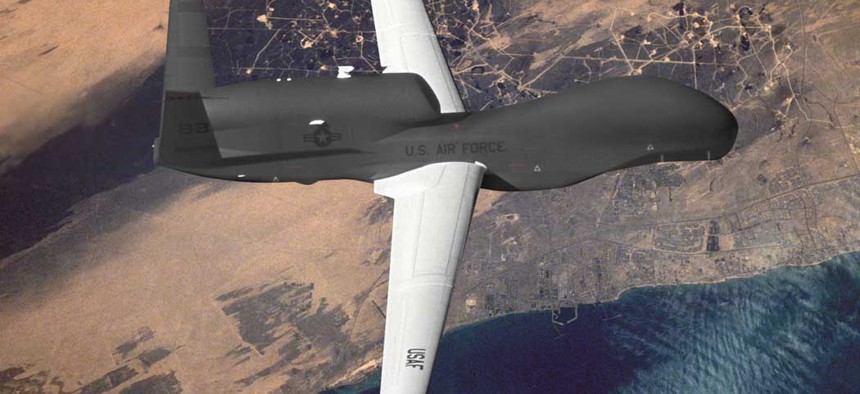Air Force adds to deal for upgrading Global Hawk UAS
The award adds to the retrofit work for the unmanned aircraft, which is slated to entirely replace the manned U-2 spy plane.
The Air Force is continuing to invest in upgrades to the Global Hawk unmanned aerial system, most recently giving Northrop Grumman a $30.3 million contract modification for retrofits that will help several of the aircraft take over some of the duties carried out by the U-2 spy plane.
The modification, to a maximum $354.9 million contract awarded in August 2014, calls for retrofitting eight of the UAS, converting them from Block 30I aircraft to Block 30M capable aircraft, according to a Defense Department announcement.
The Global Hawk, which is manufactured by Northrop, is the Air Force’s long-range, high-altitude ISR (intelligence, surveillance and reconnaissance) unmanned aircraft. There are several versions of the Global Hawk, which can fly for up to 32 hours at altitudes as high as 60,000 feet, with a range of 12,300 nautical miles, providing imaging and signals intelligence, as well as communications support, to troops around the world.
Congress has pushed for the Global Hawk to entirely replace the U-2, a move the Air Force had resisted for years, saying the manned U-2 was in some ways more capable and maintaining the two systems were complementary. The Air Force relented in early 2014 when the costs of operating the Global Hawk fell below those of the U-2.
Last May, the service announced plans to spend $4 billion over five years on the Global Hawk program. Some of the upgrade work to date has included retrofitting sensors and pods from the U-2 to the Global Hawk. Earlier this year, Northrop announced that a Global Hawk for the first time successfully flew a Senior Year Electro-optical Reconnaissance System-2, known as SYERS.
The Air Force also has been buying more of the UAS, giving Northrop a $240 million deal in August 2014 for three additional Block 30 RQ-4B Global Hawks, each with each with an Enhanced Integrated Sensor Suite and an Airborne Signals Intelligence Payload.
Work on the most recent contract modification is expected to be finished by Dec. 30, 2017.





